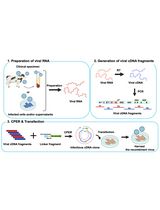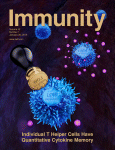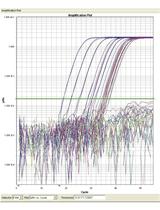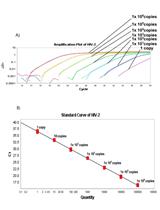- EN - English
- CN - 中文
HBV Infection in Human Hepatocytes and Quantification of Encapsidated HBV DNA
人肝细胞的HBV感染和壳体化HBV DNA的量化
发布: 2016年01月20日第6卷第2期 DOI: 10.21769/BioProtoc.1717 浏览次数: 11152
评审: Jia LiRamalingam BethunaickanAnonymous reviewer(s)

相关实验方案

基于扩展型CPER的快速无质粒重组正链RNA病毒构建方法:适用于IRES介导翻译系统
Hirotaka Yamamoto [...] Takausuke Fukuhara
2025年04月20日 2038 阅读
Abstract
Human hepatic cancer cell lines such as HepG2, Huh7, and HLE cannot get infected with Hepatitis B virus (HBV) due to lack of an HBV receptor(s). Transfection with HBV genome has so far been referred as a tool to mimic HBV infection. However, since sodium taurocholate cotransporting polypeptide (NTCP) was identified as a functional receptor for HBV (Yan et al., 2012), hepatocyte cell lines that were stably transfected with a plasmid for NTCP expression have been used for HBV infection. This protocol is designed for infection with HBV in human hepatocyte cell line HepG2 expressing NTCP (HepG2-hNTCP-C4 cells; Iwamoto et al., 2014) or primary human hepatocytes (PHHs). In this section, we also describe one of the methods for the assessment of HBV infection: Quantification of the intracellular encapsidated HBV DNA.
Keywords: Hepatitis B virus (乙型肝炎病毒)Materials and Reagents
Materials
- 0.1-10 μl pipet tips (Thermo Fisher Scientific, catalog number: QSP#TF104 )
- 1-200 μl and 100-1,000 μl pipet tips (Corning, catalog numbers: 4845 and 4846 , respectively)
- Falcon 12-well tissue culture plate (Corning, catalog number: 353043 )
- Biocoat collagen I cellware 12-well plate (Corning, catalog number: 356500 )
- 1.5 ml and 2.0 ml microcentrifuge tubes (Corning, catalog numbers: MCT-150-A and MCT-200-C , respectively)
- 15 ml and 50 ml centrifuge tubes (Corning Incorporated, catalog numbers: 352096 and 352070 , respectively)
- 96-well fast plate (NIPPON Genetics, catalog number: 38801 )
Reagents
- Hepatocyte culture and infection with HBV
- Primary human hepatocytes (PHHs) (PhoenixBio Co.)
- HepG2-hNTCP-C4 cells (Drs. Takaji Wakita and Koichi Watashi, Department of Virology II, National Institute of Infectious Diseases, Tokyo, Japan; Iwamoto et al., 2014)
- Dulbecco’s Modified Eagle’s Medium (DMEM) (NISSUI PHARMACEUTICAL, catalog number: 05919 )
- DMEM/F-12+GlutaMax (Life Technologies, catalog number: 31331-028 )
Note: Currently, it is “Thermo Fisher Scientific, Gibco™, catalog number: 31331-028 ”. - 4-(2-hydroxyethyl)-1-piperazineethanesulfonic acid (HEPES) (Life Technologies, catalog number: 15630-080 )
Note: Currently, it is “Thermo Fisher Scientific, Gibco™, catalog number: 15630-080”. - Fetal bovine serum (FBS) (Life Technologies, catalog number: 10437-028 )
Note: Currently, it is “Thermo Fisher Scientific, Gibco™, catalog number: 10437-028”. - G418 (Nacalai tesque, catalog number: 09380-86 )
- Phosphate-buffered saline (PBS) (pH 7.4)
- HBV plasmid (pUC19-HBV, genotype C) (Dr. Yasuhito Tanaka, Department of Virology and Liver Unit, Nagoya City University Graduate School of Medical Sciences, Nagoya, Japan; Sugiyama et al., 2006)
- FuGENE 6 transfection reagent (Promega Corporation, catalog number: E2692 )
- Opti-MEM I reduced-serum medium (Life Technologies, catalog number: 31985-070 )
Note: Currently, it is “Thermo Fisher Scientific, Gibco™, catalog number: 31985-070”. - QIAamp DNA Blood Mini Kit (QIAGEN, catalog number: 51104 )
- Polyethyleneglycol 8000 (PEG 8000) (Sigma-Aldrich, catalog number: 81268 )
- PHHs culture media (see Recipes)
- HepG2-hNTCP-C4 culture media (see Recipes)
- Primary human hepatocytes (PHHs) (PhoenixBio Co.)
- Encapsidated HBV DNA extraction
- Nuclease free-H2O
- Tris (hydroxymethyl) aminomethane (Tris) (Nacalai tesque, catalog number: 35406-91 )
- NP-40 (Nacalai tesque, catalog number: 25223-75 )
- Magnesium acetate (MgOAc) (Wako Pure Chemical Industries, Siyaku, catalog number: 130-00095 )
- Ethylenediaminetetraacetic acid (EDTA) (Wako Pure Chemical Industries, Siyaku, catalog number: 345-01865 )
- Proteases K (Life Technologies, catalog number: 25530-015 )
Note: Currently, it is “Thermo Fisher Scientific, Invitrogen™, catalog number: 25530-015”. - Sodium dodecyl sulfate (SDS) (Wako Pure Chemical Industries, Siyaku, catalog number: 191-07145 )
- Sodium chloride (NaCl) (Nacalai tesque, catalog number: 31320-05 )
- Deoxyribonuclease I (DNase I) (Promega Corporation, catalog number: M6101A )
- Ribonuclease A (RNase A) (Life Technologies, catalog number: 12091-021 )
Note: Currently, it is “Thermo Fisher Scientific, Invitrogen™, catalog number: 12091-021”. - Phenol:chloroform:isoamyl alcohol (25:24:1) (Sigma-Aldrich, catalog number: P2069 )
- Chloroform (KANTO CHEMICAL, catalog number: 07278-00 )
- Sodium acetate (NaOAc) (Wako Pure Chemical Industries, Siyaku, catalog number: 198-01055 )
- Glycogen (Roche Diagnostics, catalog number: 10901393001 )
- Isopropanol (Nacalai tesque, catalog number: 29113-53 )
- Ethanol (99.5%) (Nacalai tesque, catalog number: 14713-95 )
- Lysis buffer (see Recipes)
- Nuclease free-H2O
- qPCR for quantification of HBV DNA
- SYBR Premix Ex Taq (2x) (Tli RNase H Plus) (Takara Bio Company, catalog number: RR420 )
- ROX reference dye (50x) (Takara Bio Company, catalog number: A9701A )
- Primers for amplification of encapsidated HBV DNA by quantitative PCR
Forward: 5’-CTTCATCCTGCTGCTATGCCT-3’
Reverse: 5’-AAAGCCCAGGATGATGGGAT-3’
(Product length: 222 bp, product Tm: 83.5 °C)
- SYBR Premix Ex Taq (2x) (Tli RNase H Plus) (Takara Bio Company, catalog number: RR420 )
Equipment
- 37 °C and 5% CO2 cell culture incubator (WAKENBTECH CO., catalog number: 9000EX )
- Pipettes (PIPETMAN P2, P20 and P1000) (Gilson Scientific, catalog numbers: F144801 , F123600 and F123602 , respectively)
- High speed refrigerated micro centrifuge (KUBOTA Corporation, catalog number: 3500 )
- Vortex mixer (Labnet Internationa, catalog number: vx100 )
- Shaker (Tokyo Rikakikai Co., EYELA, catalog number: MMS-110 )
- Double aluminum block bath (SCINICS CORPORATION, catalog number: ALB-301 )
- ABI StepOnePlus™ Real-Time PCR Systems (Life Technologies, catalog number: 4379216 )
Note: Currently, it is “Thermo Fisher Scientific, Applied Biosystems™, catalog number: 4379216”. - qPCR adhesive seal (NIPPON Genetics, catalog number: 4Ti-0560 )
Procedure
文章信息
版权信息
© 2016 The Authors; exclusive licensee Bio-protocol LLC.
如何引用
Li, K., Sato, S. and Takaoka, A. (2016). HBV Infection in Human Hepatocytes and Quantification of Encapsidated HBV DNA. Bio-protocol 6(2): e1717. DOI: 10.21769/BioProtoc.1717.
分类
微生物学 > 微生物遗传学 > DNA > DNA 定量
微生物学 > 微生物-宿主相互作用 > 体外实验模型
微生物学 > 微生物-宿主相互作用 > 病毒
您对这篇实验方法有问题吗?
在此处发布您的问题,我们将邀请本文作者来回答。同时,我们会将您的问题发布到Bio-protocol Exchange,以便寻求社区成员的帮助。
Share
Bluesky
X
Copy link











